| Amount Per 5 oz | |||
| Calories | 1000 Kcal (4187 kJ) | ||
| Calories from fat | 153 Kcal | ||
| % Daily Value* | |||
| Total Fat | 17g | 26% | |
|---|---|---|---|
| Saturated Fat | 7g | 35% | |
| Cholesterol | 60mg | 20% | |
| Sodium | 560mg | 23% | |
| Total Carbs | 19g | 6% | |
| Sugars | 16g | 64% | |
| Protein | 23g | 46% | |
| Vitamin C | 2.4mg | 4% | |
| Vitamin A | 0.8mg | 27% | |
| Iron | 1.1mg | 6% | |
* Percent Daily Values are based on a 2000 calorie diet. Your daily values may be higher or lower depending on your calorie needs.
Find out how many calories should you eat.
Ingredients And Nutrition Overview
Best
choice Good
choice Poor
choice Avoid
it!
choice Good
choice Poor
choice Avoid
it!
-
WeightWatchers Points: 21.4, PointsPlus: 9, SmartPoints: 32
WeightWatchers Points are estimated by carbohydrates, fats, protein and fiber in product. They are not an affirmation of better quality or nutritional value of the product or its manufacturer. Only way to count for dieters. Less points are better.
Read more at Weight watchers diet review -
5.5 tsp of sugars per serving
This includes both naturally occurring and added sugars. According to the USDA, every man woman and child in the US consumes approximately 80 pounds of caloric sweeteners per year! That works out to 25 tsp of sugars per day, or 400 extra calories!
-
Contains trans-fats! Even if label says 0!
Consumption of food containing trans-fat has unequivocally been shown to increase the risk of heart disease by raising levels of LDL (bad cholesterol), and lowering levels of HDL (good cholesterol). Why do the nutrition labels on some products say that there are no trans fats, while Fooducate insists there are? Unfortunately there is an FDA loop hole here. If the amount of trans-fat in a product is less than half a gram per serving, manufacturers can round it down to 0. But even 0.49 grams of trans-fat is bad for you. And don't even get us started on the actual consumption versus the tiny serving size. So how do you know if a product does have trans fat in it? Look for "partially hydrogenated" oils and fats in the ingredient list. Sources: ----------- Mensink RPM, Katan MB. Effect of dietary trans fatty acids on high-density and low-density lipoprotein cholesterol levels in healthy subjects. N Engl J Med 1990;323:439-45. Zock PL, Katan MB. Hydrogenation alternatives: effects of trans fatty acids and stearic acid versus linoleic acid on serum lipids and lipoproteins in humans. J Lipid Res l992;33:399-4l0. Judd JT, Clevidence BA, Muesing RA, Wittes J, Sunkin ME, Podczasy JJ. Dietary trans fatty acids: effects of plasma lipids and lipoproteins of healthy men and women. Am J Clin Nutr 1994;59:861-8. Lichtenstein AH, Ausman LM, Jalbert SM, Schaefer EJ. Effects of different forms of dietary hydrogenated fats on serum lipoprotein cholesterol levels. N Engl J Med 1999;340:1933–1940 Hu FB, Stampfer MJ, Manson JE, Rimm E, Colditz GA, Rosner BA, et al. Dietary fat intake and the risk of coronary heart disease in women. N Engl J Med. 1997;337:1491–9. Mozaffarian D, Katan MB, Ascherio A, Stampfer MJ, Willett WC. Trans fatty acids and cardiovascular disease. N Engl J Med. 2006;354:1601–1613.
-
Very high in saturated fat
Not all fats are created equal. Saturated fats are the ones responsible for bad cholesterol buildup in our blood vessels, as well as contributing to coronary disease.
-
Very high cholesterol
While cholesterol has been shown to be less harmful than once believed, you should not consume more than 300mg a day. This product has 90 mg of cholesterol or more. If you're on a low cholesterol diet, make sure you pay attention to portion: 10% of your daily allowance can quickly become 50% when a hamburger turns into double cheeseburger AND your allowance has been reduced to 200mg. Trouble sticking to daily goals? Try limiting your meat, cheese and dairy intake to one item per meal and avoid items with multiple sources of cholesterol (like chicken with ham and cheese, breakfast sandwiches with sausage and cheese or bacon cheeseburgers).
-
Salty! Has over 35% of the daily max
Americans consume 4000 mg of sodium daily when the maximum recommended amount is 2300mg for healthy adults. Many people should not exceed 1500mg. Most of the sodium (65%) in our diet comes from processed foods, not home cooking or the salt shaker. Excess sodium intake increases blood pressure, causes hypertension and other heart problems. That’s why most of us need to cut back.
-
For dieters: FoodPoints value is 10
* FoodPoints are calculated by Fooducate based on fats, carbs, fiber, and protein. They are not an endorsement or approval of the product or its manufacturer. The fewer points - the better.
-
Puffed up with protein?
Protein is important, but some of the protein you find in this product isn't exactly natural. The protein comes from one of the following sources: - milk protein concentrate - whey protein isolate - soy protein isolate While it's fine to get some of your protein from supplemented items, keep in mind that they are not "natural" sources and that it's not ideal to get protein only from processed goods. If you're looking for more protein, try beans, quinoa, nuts, seeds, peas and spinach & leafy greens. Not only do they have protein, they're filled with other vitamins and minerals.
-
Highly Processed!
This product is highly processed. If you'll take a look at its ingredient list, you'll discover new words to add to your vocabulary. Many of theses ingredients are required to increase the shelf life of the product and improve the flavor that disappears when food is not fresh.
-
Contains high fructose corn syrup
High fructose corn syrup (HFCS) is a highly processed ingredient manufactured from surplus corn, and yielding a cheap replacement to table sugar. In the early 1980’s many food manufacturers started using it instead of sugar as a cost cutting measure. That’s about the same time obesity rates started to skyrocket in the US. Most scientists agree that HFCS is no better and no worse than plain sugar, though some newer studies seem to find the two affect the metabolism differently. Consumption of both should be drastically limited. ---- Sources: Bray GA, Nielsen SJ, Popkin BM. Consumption of high-fructose corn syrup in beverages may play a role in the epidemic of obesity. Am J Clin Nutr. 2004;79(4):537-43. Berkey CS, Rockett HR, Field AE, Gillman MW, Colditz GA. Sugar-added beverages and adolescent weight change. Obes Res. 2004;12(5):778-88. Johnson RJ, Segal MS, Sautin Y, Nakagawa T, Feig DI, Kang DH, Gersch MS, Benner S, Sánchez-Lozada LG. Potential role of sugar (fructose) in the epidemic of hypertension, obesity and the metabolic syndrome, diabetes, kidney disease, and cardiovascular disease. Am J Clin Nutr. 2007;86(4):899-906. Schulze MB, Manson JE, Ludwig DS, Colditz GA, Stampfer MJ, Willett WC, Hu FB. Sugar-sweetened beverages, weight gain, and incidence of type 2 diabetes in young and middle-aged women. JAMA. 2004;292(8):927-34. Ludwig DS, Peterson KE, Gortmaker SL. Relation between consumption of sugar-sweetened drinks and childhood obesity: a prospective, observational analysis. Lancet. 2001;357(9255):505-8. James J, Thomas P, Cavan D, Kerr D. Preventing childhood obesity by reducing consumption of carbonated drinks: cluster randomised controlled trial. BMJ. 2004;328(7450):1237.
-
Contains MSG-like ingredients
People sensitive to MSG may also be sensitive to MSG-like substances. These are glutamates or chemically similar items added to improve a product's taste. Here is a short list of common MSG-like substances (see our blog for more): - Yeast extract - Autolyzed yeast - Hydrolyzed proteins ---- Source: Scopp AL. MSG and hydrolyzed vegetable protein induced headache: review and case studies. Headache. 1991;31(2):107-10. Questions and Answers on Monosodium glutamate (MSG) http://www.fda.gov/food/ingredientspackaginglabeling/foodadditivesingredients/ucm328728.htm Natural Flavorings on Meat and Poultry Labels http://www.fsis.usda.gov/wps/portal/fsis/topics/food-safety-education/get-answers/food-safety-fact-sheets/food-labeling/natural-flavorings-on-meat-and-poultry-labels
-
Learn about industrial caramel coloring
Homemade caramel is made by melting sugar in a saucepan. Brown coloring in sodas and some other products is not the same thing. Industrial caramel coloring is made by reacting sugars with ammonia and sulfites under high pressure and temperatures. The chemical reactions create 4-methylimidazole, which in government-conducted studies caused lung, liver, or thyroid cancer or leukemia in laboratory mice or rats. This is why California recently required foods containing caramel color to be labeled as potential cancer-causing agents. But you won't see this warning label any time soon - manufacturers simply reduced the use of caramel color enough that the labeling requirements no longer applied. Caramel color varies slightly between products - when in beer, sauces or baked goods it has just ammonia and when used in soft drinks, it has both sulfites and ammonia. Neither one is a "good" option. Bottom line: Choose something else, less controversial.
-
One of the worst products in its category
This product is in the bottom 10% of the products in its category
-
Natural flavors added. Learn why
Companies add flavorings to make products taste better. They are created in a lab and the formulations are guarded as trade secrets. Flavorings can compensate for flavor loss during processing, substitute for ingredients, lower production costs and increase shelf stability. Natural flavorings are more expensive to source than artificial flavors, but tend to be better received by consumers. People sensitive to MSG, vegans, vegetarians and those with allergies should pay special attention to the phrase "natural flavorings" since glutamates, animal products or allergens may be the source of natural flavors. You can always contact the manufacturer for more information.
-
Learn about corn syrup, found here
Corn syrup is often used as a sweetener in processed food. It is NOT THE SAME as high fructose corn syrup. Don't be fooled when looking up the amount of sugar a product contains if corn syrup is listed as an ingredient. This is because corn syrup contains 50% sugar, and 50% of another form of carbohydrate known as ""oligosaccharides"", which is pretty close to sugar. If a product has less sugar than you think it should, but contains corn syrup in the ingredient list, you'll know that the missing carbs are those oligosaccharides, not much better.
-
Watch the cholesterol...
While cholesterol has been shown to be less harmful than once believed, you should not consume more than 300mg a day. This product contains more than 10% of your daily cholesterol intake. If you're on a low cholesterol diet, make sure you pay attention to portion: 10% of your daily allowance can quickly become 50% when a hamburger turns into double cheeseburger. Trouble sticking to daily goals? Try limiting your meat, cheese and dairy intake to one item per meal and avoid items with multiple sources of cholesterol (like chicken with ham and cheese, breakfast sandwiches with sausage and cheese or bacon cheeseburgers). Opt for items like BLT's, chicken sandwiches with veggies and meatless pizza. Choose water and not milk for your main mealtime beverage.
You Might Also Like
% RDI of Main Nutrition Facts
50%
of RDI* (1000 calories) 140 g
-
Cal: 50 %
-
Fat: 26.2 %
-
Carb: 6.3 %
-
Prot: 46 %
-
0%25%75%RDI norm*
Calories Breakdown
- Carbs (23.7%)
- Fat (47.7%)
- Protein (28.7%)
Get Your Recipe of Health!
Follow RecipeOfHealth on Facebook!


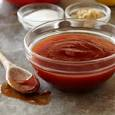
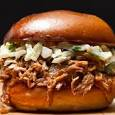
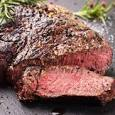
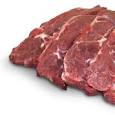
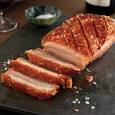
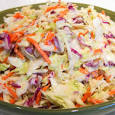


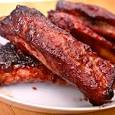

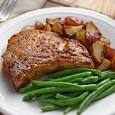
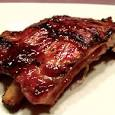
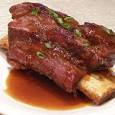
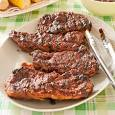
















Add your comment